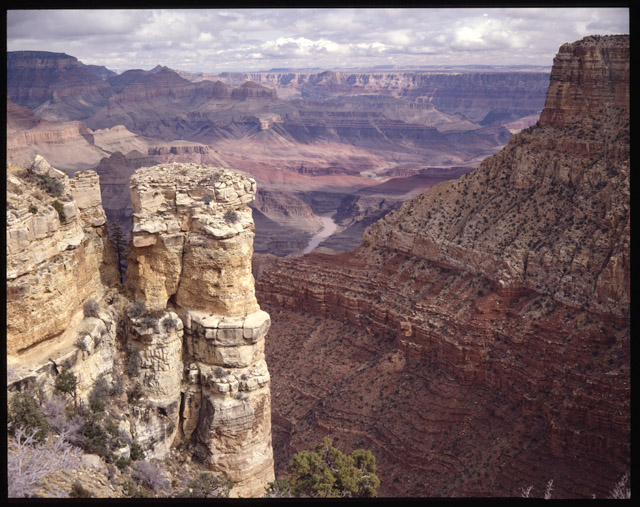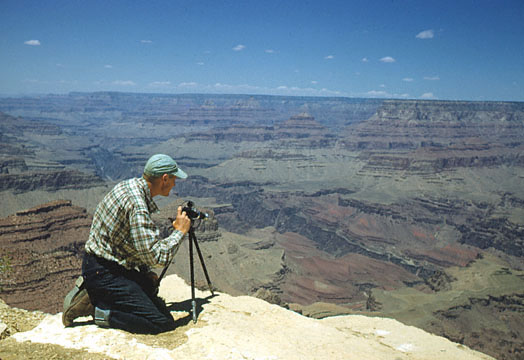Moran Point is a popular spot on the South Rim for gazing into the canyon. It is situated near the main park visitor center a few miles east of the Grand Canyon Village. Many people erroneously assume it is named for famed American landscape artist Thomas Moran, but it is probably named instead for his brother, Peter Moran, an accomplished artist in his own right. Peter Moran traveled to the South Rim in 1881 with explorer and Army Captain John Bourke, who probably named the point in his honor. Thomas Moran never saw the South Rim until 1892 when he visited as a guest of the Santa Fe Railway. To read more about Thomas Moran’s significance to American art, visit our Landscape Art page. A spur from Desert View Drive allows visitors to pull over and enjoy canyon vistas. The point is due south of Cape Royal viewpoint on the North Rim. Though only separated by eight miles across the chasm, it would take hundreds of miles of driving from Moran Point to reach the Cape Royal viewpoint.
Three of the Grand Canyon’s main rock groups are visible at Moran Point: Layered Paleozoic Rocks, the Grand Canyon Supergroup, and the Vishnu Basement Rocks. The first group is comprised of sedimentary rocks, which make up most of the Grand Canyon. The Supergroup rocks are visible at only a few spots along the rim. The Vishnu Basement Rocks are both igneous and metamorphic, and represent the oldest rocks that can be found at the Grand Canyon. The Colorado River cuts through this final layer, and is visible below Moran Point. The point also provides an excellent view of Red Canyon, where John Hance built a mining operation and several trails.
Today photographers and painters fittingly choose Moran Point as one of their favorite spots for capturing the light and shadows that play upon the Canyon walls.
Written By Sarah Bohl Gerke
Suggested Reading:
- Anderson, Michael. Polishing the Jewel: An Administrative History of Grand Canyon National Park. Grand Canyon Association, 2000.
- Wilkins, Thurman. Thomas Moran: Artist of the Mountains. University of Oklahoma Press, revised edition, 1998.


